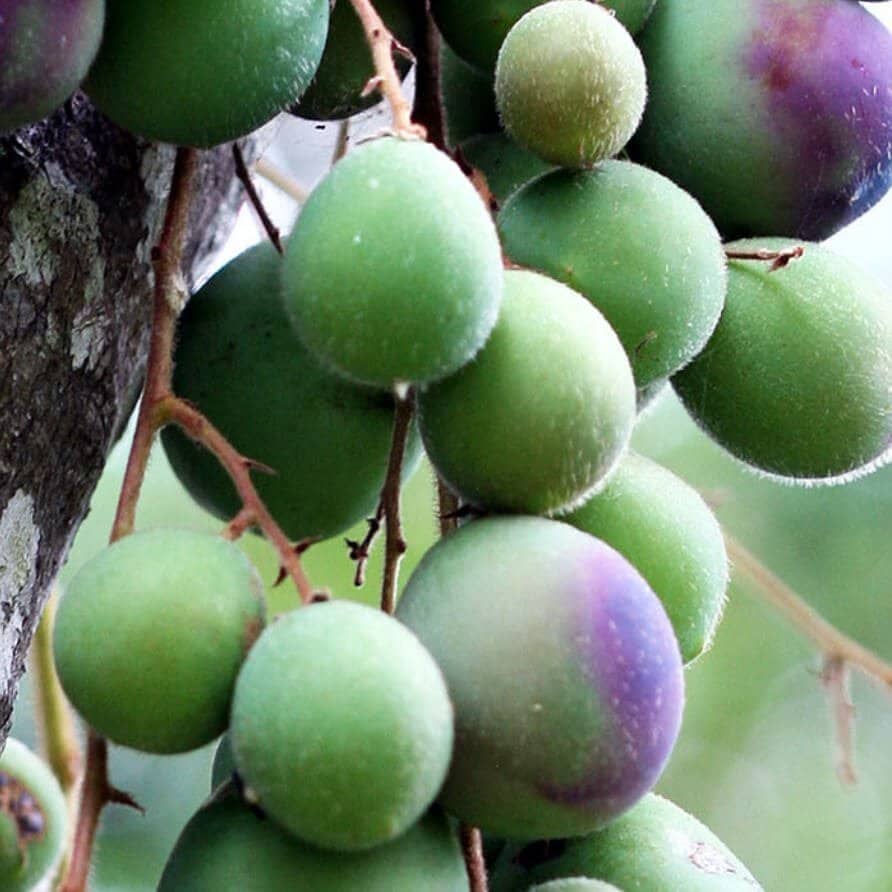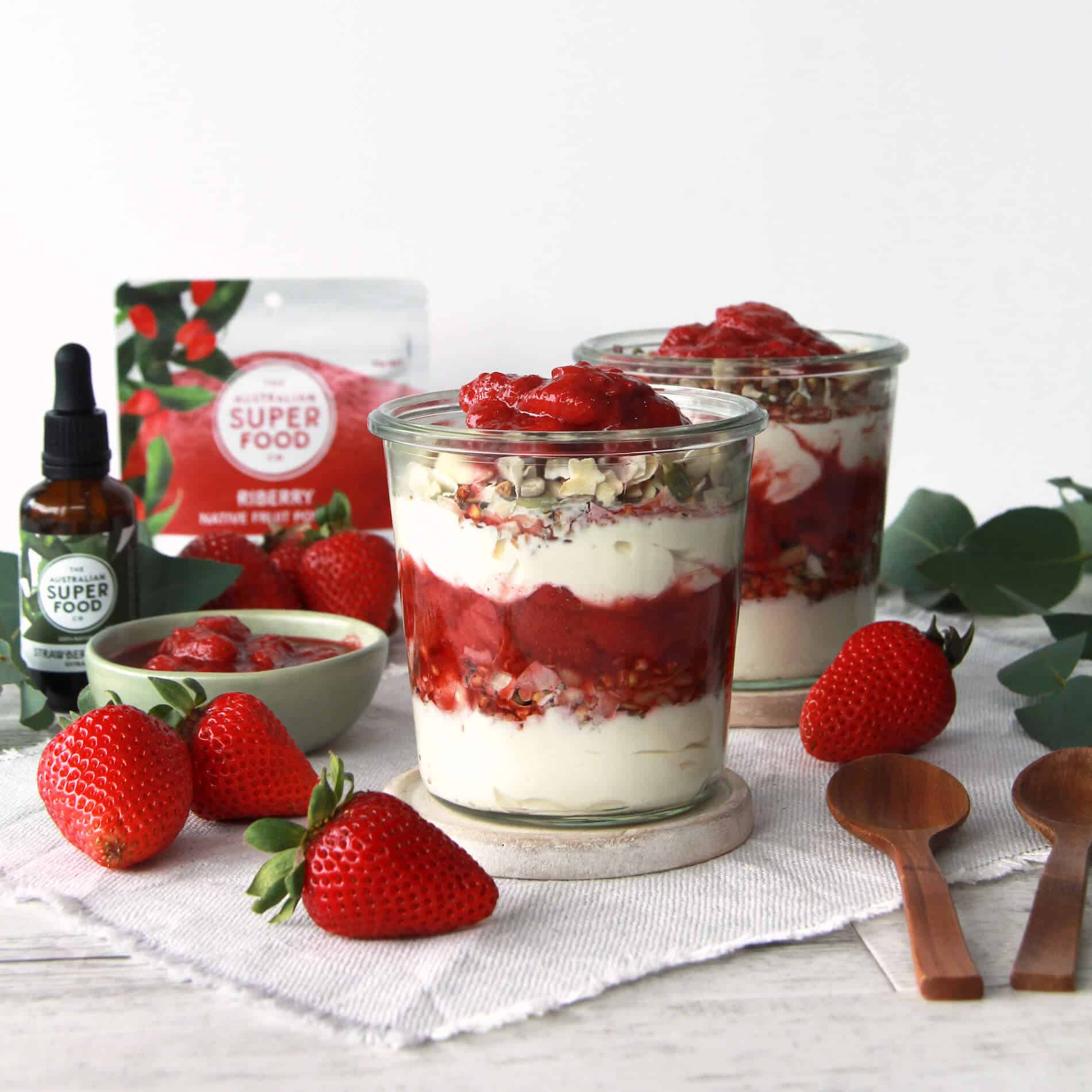FINGER LIMES + KAKADU PLUMS: 6 AUSTRALIAN SUPERFOODS WE’RE LOVING NOW
07/06/2016The following article appeared on Chalkboard Magazine on 6 June 2016:
We’re obsessed with finger limes! Find out which tropical superfoods are trending Down Under and throw a few in these high-potency pancakes…
PASS THE KAKADU plums. If that’s what it takes to get the laidback vibe of the Australian girls we’re noticing lately, we’re ready to gorge ourselves on these superfoods stat. There is no end to the Australian inspo going on via Instagram and we’re into it – from fashion to fitness, natural beauty to beachy superfood eats, there must be something in the water Down Under and we’re ready to drink up.
Although our office snack stash is like an international conference of superfoods already, some of these fruits are news to us! We’re loving a few of these crazy fruits and a superfood recipe brought to us by the ladies of Free People’s Bldg 25….
The recent popularity of so-called “superfoods” has been a hot nutritional topic for the past few years. And while the trend can sometimes seem a little hyperbolic, many of these nourishing, plant-based extracts, usually available in powder form, have their origins in indigenous wellbeing practices. Our ancestors discovered and cultivated their native roots, berries, seeds and leaves to bolster longevity, treat ailments and provide critical nutrients when sustenance was sparse. Usually these plants thrived even in arid and barren conditions, and their adaptogenic qualities—hardy in the face of ecological adversity—were prized for imbuing the forager with those same qualities.
Think of now-popular super foods such as maca from Peru, ginseng from China, and holy basil (or tulsi) from India. Known as the “ancient healers”, today they are more coveted for their health and beauty-boosting powers. But perhaps lesser known is the bounty of native Australian superfoods, which thrive in one of the Earth’s most sun-scorched landscapes. Top superfoods include…
Kakadu plums: has the highest recorded levels of Vitamin C of all other fruits, as well as powerfully hydrating and antiseptic properties.
Davidson plums: a rich source of antioxidants, vitamin E and zinc – all of which are essential for glowing skin. These plums provide unique dairy-free source of calcium as well.
Quandong: a fruit with anti-bacterial and anti-inflammatory properties, as well as protein and complex oils that boost the immune system and promote brain health.
Wattleseed: these seeds are packed with protein, potassium, calcium, iron and zinc. The seeds can be ground up to create a nutrient-dense flour.
Finger limes: rich in folate, potassium and Vitamin C & E
Lemon myrtle leaves: known as a potent anti-fungal immunity-booster and can be used for healing internally and topically.
Queensland-based food stylist and recipe writer Hannah Archibald of The Seasonal Circle first became interested in native ingredients while doing research at university. “I came across the Kakadu plum, which was found in the 1980s to have the highest level of Vitamin C than any other known fruit at the time. It was gaining a bit of interest as a potential ingredient in health and skin supplements and I was interested in its horticultural development.” Some of Archibald’s other favorites include “native finger limes, pepper berries and lemon myrtle–all have become more accessible in recent years and are very versatile. Finger limes are being heralded as the next macadamia nut in terms of popularity, and I love incorporating Illawarra plums and Davidson plums into dishes for their high antioxidant content.”
You can find them from companies such as The Australian Super Food Co. who have harnessed the potency of these ingredients, making them easy to blend into smoothies, sprinkle on salads and bake into muffins.
For inspiration on how to use these goodies in our cooking, we looked to the charming and irreverent online food ‘zine Dish Pig, which often collaborates with Archibald on recipes. Below, Dish Pig shares Archibald’s recipe for Native Pikelets (that’s pancakes to those in America!) with macadamia nut cream and Davidson plum jam.
Wattleseed adds an earthy flavor, while the macadamia nut cream adds texture. The Davidson plums are quite tart, a common characteristic in many Australian native fruits. Illawarra and Davidson plums are very high in antioxidants, although they can be hard to source, so blueberries or any type of local plum can be substituted in this recipe too.
WATTLESEED + PLUM PANCAKES
Serves 6
Ingredients:
1 cup wholemeal spelt flour
1/3 cup rolled oats, finely ground
1/2 tsp ground wattleseed (optional)
1 tsp baking powder
1 cup macadamia nut milk
2 eggs, separated
1 whole pear, finely grated
1 lemon
6 Illawarra plums (or local seasonal plums or blueberries)
20g butter or coconut oil for cooking
Directions:
Combine spelt flour, oat flour, wattleseed and baking powder in a bowl. Finely grate pear and zest 1 lemon. Whisk egg yolks and macadamia nut milk in a separate bowl until combined, then add pear and lemon zest. Pour this mixture into flour mixture and whisk to combine. Whisk egg whites in a separate bowl until soft peaks form and then fold through mixture. Place large frying pan over medium heat. Add a dot of butter or oil and a tablespoon at a time of batter into pan. Add sliced plum or blueberries to the top of each pikelet if desired (works well without). Cook until bases are golden (approximately 2 minutes) then flip and cook for a further two minutes or until golden. Keep warm and repeat with remaining butter and batter.
For the full article, visit Chalkboard Magazine.











